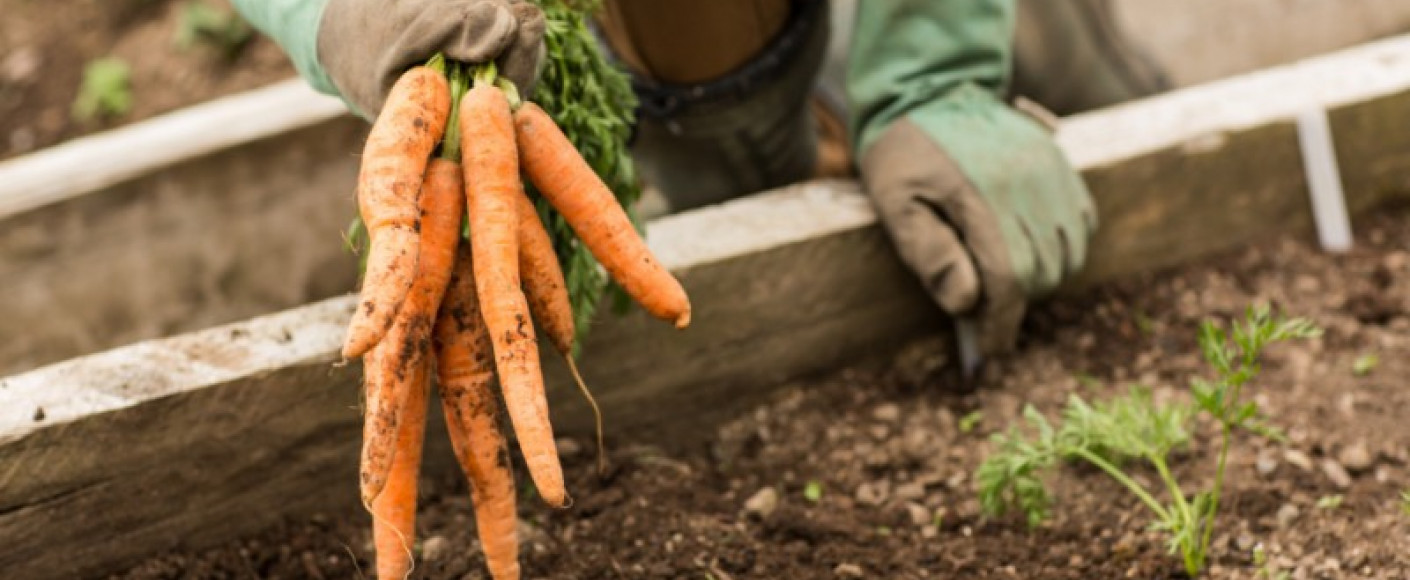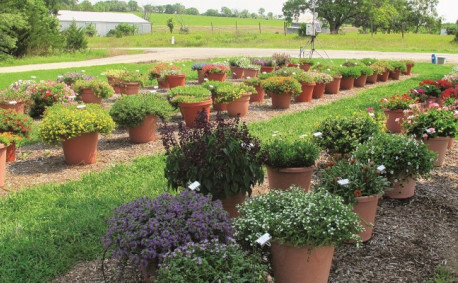Spring Into Gardening
For many people, gardening means more than having fruits and vegetables at the family table. Digging up fresh dirt, planting a seed that becomes a tomato or cucumber, and the feeling of accomplishment that comes with growing your own produce can be relaxing and rewarding. Gardening can even be a way to give back to your community. This spring, consider these tips to help you create a garden that’s perfect for you.
Gardening with a Goal
As you plan your garden, the first thing to determine is your goal.
“If you have an end goal in mind, that will help you determine a lot of the factors for setting up a garden,” says K-State 4-H associate extension specialist Evelyn Neier.
Evelyn suggests you ask yourself some questions to get started:
- Do you want to grow vegetables, fruits, herbs and/or flowers?
- What does your family like to eat?
- How much time are you prepare to devote to your garden?
- Do you plan to freeze or can?
- Do you want to provide solely for your own family, or are you considering donating to a local food pantry as well?
If you don’t want to devote a lot of time to tending a garden, start small. If it ends up being more work than you bargained for, it will feel like just that—work.
If one of your goals is to sell your produce, be aware that to sell products at Kansas farmers markets, you must adhere to governmental regulations and guidelines. Visit www.agriculture.ks.gov for more information.
Involve the Kiddos
Some families enjoy teaching their children where food comes from. For those families, involving little hands in the process can be rewarding. Kids learn invaluable lessons when planting, growing and harvesting gardens.
Decide What to Plant
Radishes are one of the quickest growing vegetables. Ready to harvest in three to six weeks after planting, they make a good cool-season spring crop. In Kansas, radishes can be planted between March 15 and April 15, but need consistent moisture for best results.
Carrots are another hardy root crop that can be grown in Kansas in the spring. They grow best when sown as seeds but should be thinned once their tops start sprouting to avoid overcrowding underground. Gradually thin the crop as the plants mature until there are three to four inches between the plants.
Onions are best grown in the spring in Kansas. Their growth is characterized by the amount of daylight available. Some will stop forming bulbs once daylight reaches 14 to 16 hours, while others stop developing when there are only 10 to 12 hours of daylight. Onions like well-drained soil that contains plenty of nitrogen.
Other spring crops include:
- Cabbage
- Broccoli
- Endive
- Cauliflower
- Lettuce
- Potatoes
- Peas
- Spinach
- Turnips
- Beets
Grow Your Knowledge
The more you know about your area’s weather, soil type, growing specifications, water and sunlight requirements, timeliness of harvest, and insect and disease issues, the more successful your garden will be.
If you have questions, check out the Kansas State University extension program for tips from their experts.
“Every county in Kansas has an extension service and agent who can help with gardening questions,” Evelyn says. “They are a great resource to utilize.”
Visit www.ksre.k-state.edu/lawn-garden for tips on gardening, including how-to videos, pest information and recommended plants.
Evelyn also recommends checking out the Kansas Garden Guide. You can download the 2020 edition for free at https://bookstore.ksre.ksu.edu/pubs/S51.pdf. K-State Research and Extension also has a Vegetable Garden Guide with helpful information specific to growing veggies.




